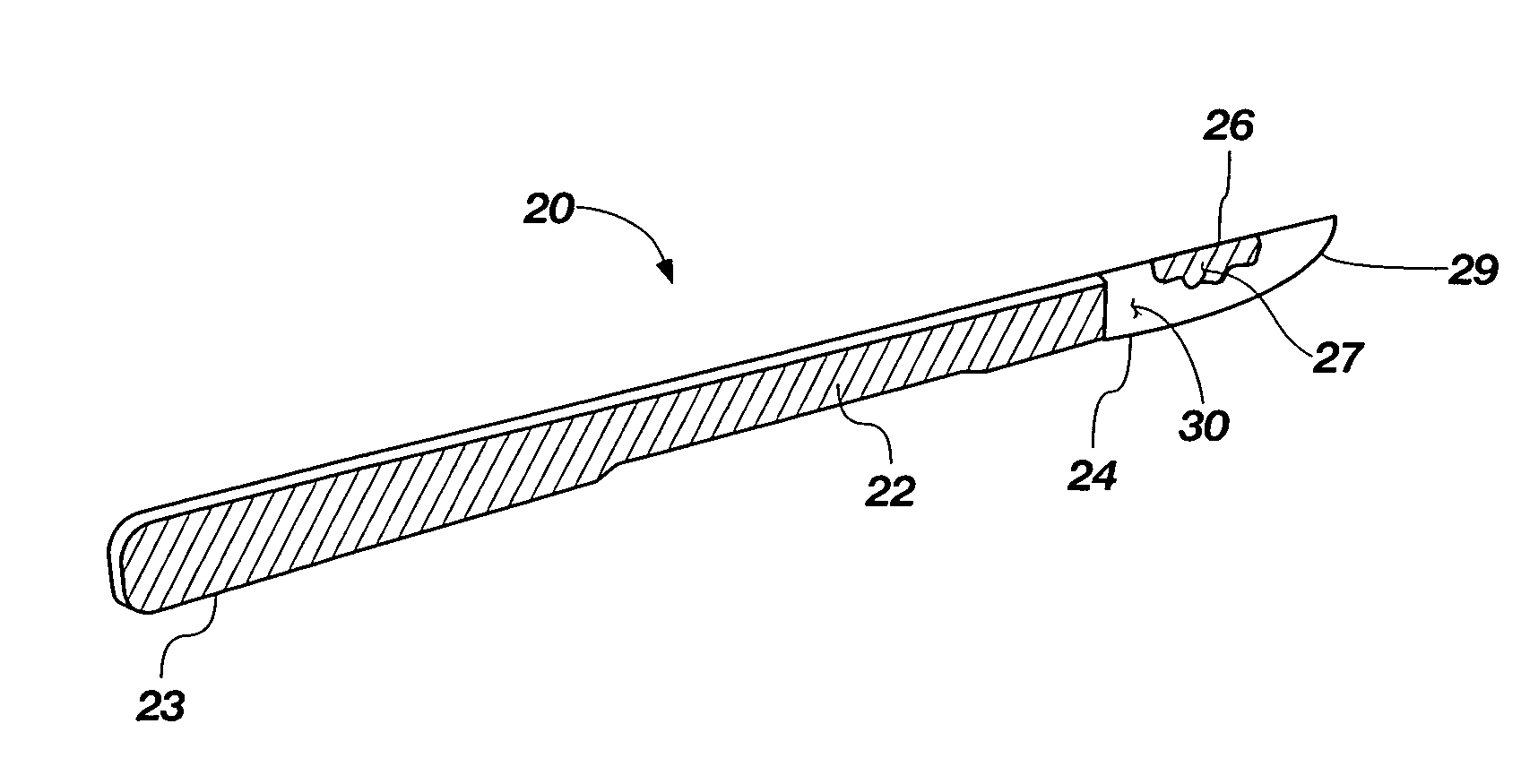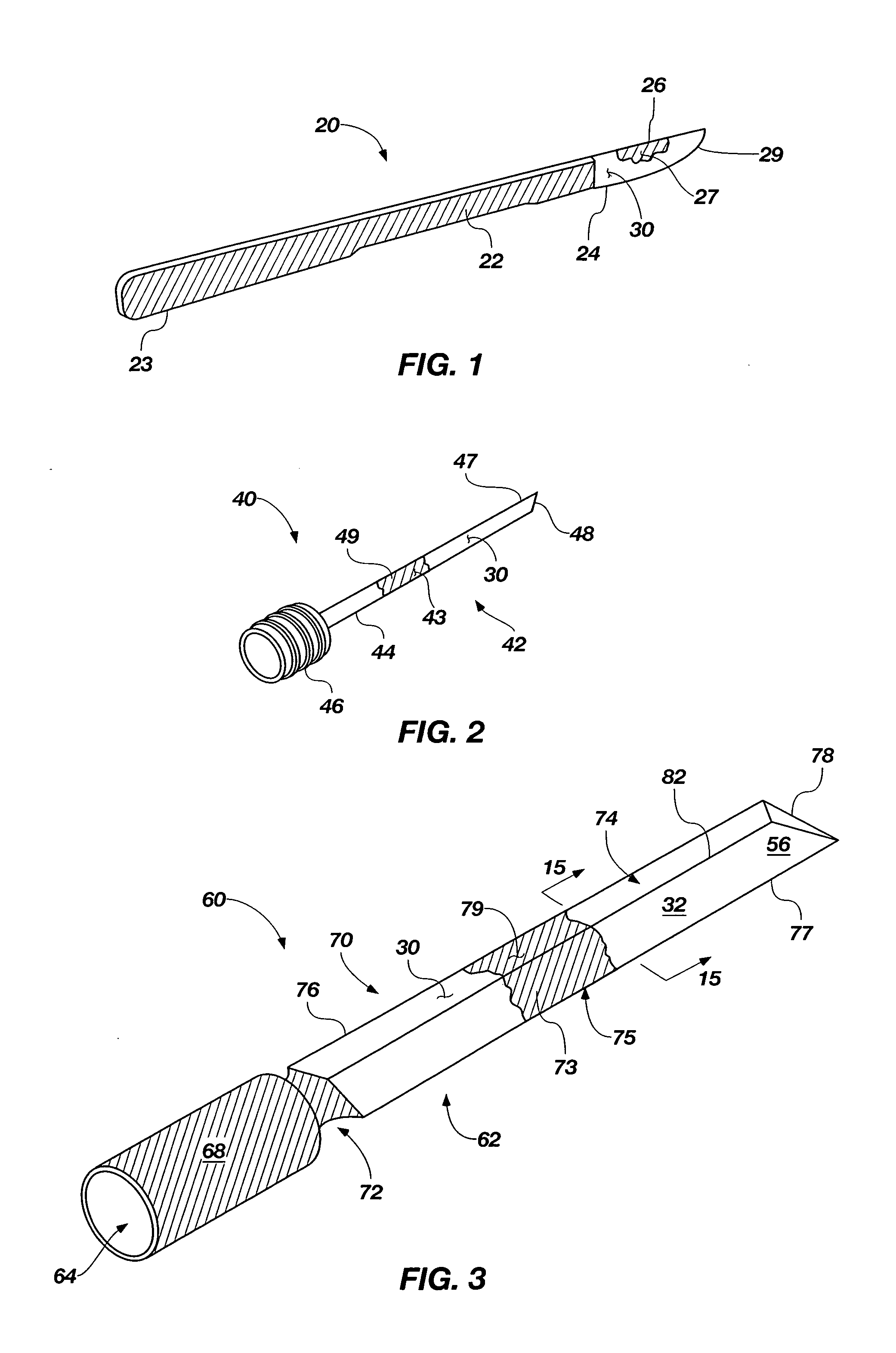Silane coating for medical devices and associated methods
a technology of medical devices and silane, applied in the field of medical devices, can solve the problems of using stainless steel electrodes, cutting or cauterizing tissue between electrodes, and incision instruments, and achieve the effect of convenient repair and non-sticky properties
- Summary
- Abstract
- Description
- Claims
- Application Information
AI Technical Summary
Benefits of technology
Problems solved by technology
Method used
Image
Examples
Embodiment Construction
[0039]With reference to FIG. 1, there is shown in perspective view a medical device 20 such as a scalpel being an elongated metal member 22 having a proximal handle end 23 adapted to be held such as by a surgeon's hand (not shown) and a distal integral or detachable cutting end 24 adapted to contact and / or interact with tissue (not shown). Cutting end 24 of scalpel 20 is typically comprised of a primary or parent metal 26 such as an alloy or composite, to thus have at the surface(s) 27 thereof the parent metal 26 making up distal end 24. Distal end 24 is desirably able to glide along human tissue (not shown) as the knife edge 29 thereof cuts same and without unduly sticking thereto. To this end, and in accordance with the disclosure herein, some selected portion or aspect or all of cutting end 24 is provided with a silane coating 30 which is associated with (e.g., applied directly to or otherwise against) parent metal 26 at surface(s) 27 making up cutting end (not shown) and without...
PUM
| Property | Measurement | Unit |
|---|---|---|
| voltage | aaaaa | aaaaa |
| voltage | aaaaa | aaaaa |
| pH | aaaaa | aaaaa |
Abstract
Description
Claims
Application Information
 Login to View More
Login to View More - R&D
- Intellectual Property
- Life Sciences
- Materials
- Tech Scout
- Unparalleled Data Quality
- Higher Quality Content
- 60% Fewer Hallucinations
Browse by: Latest US Patents, China's latest patents, Technical Efficacy Thesaurus, Application Domain, Technology Topic, Popular Technical Reports.
© 2025 PatSnap. All rights reserved.Legal|Privacy policy|Modern Slavery Act Transparency Statement|Sitemap|About US| Contact US: help@patsnap.com



